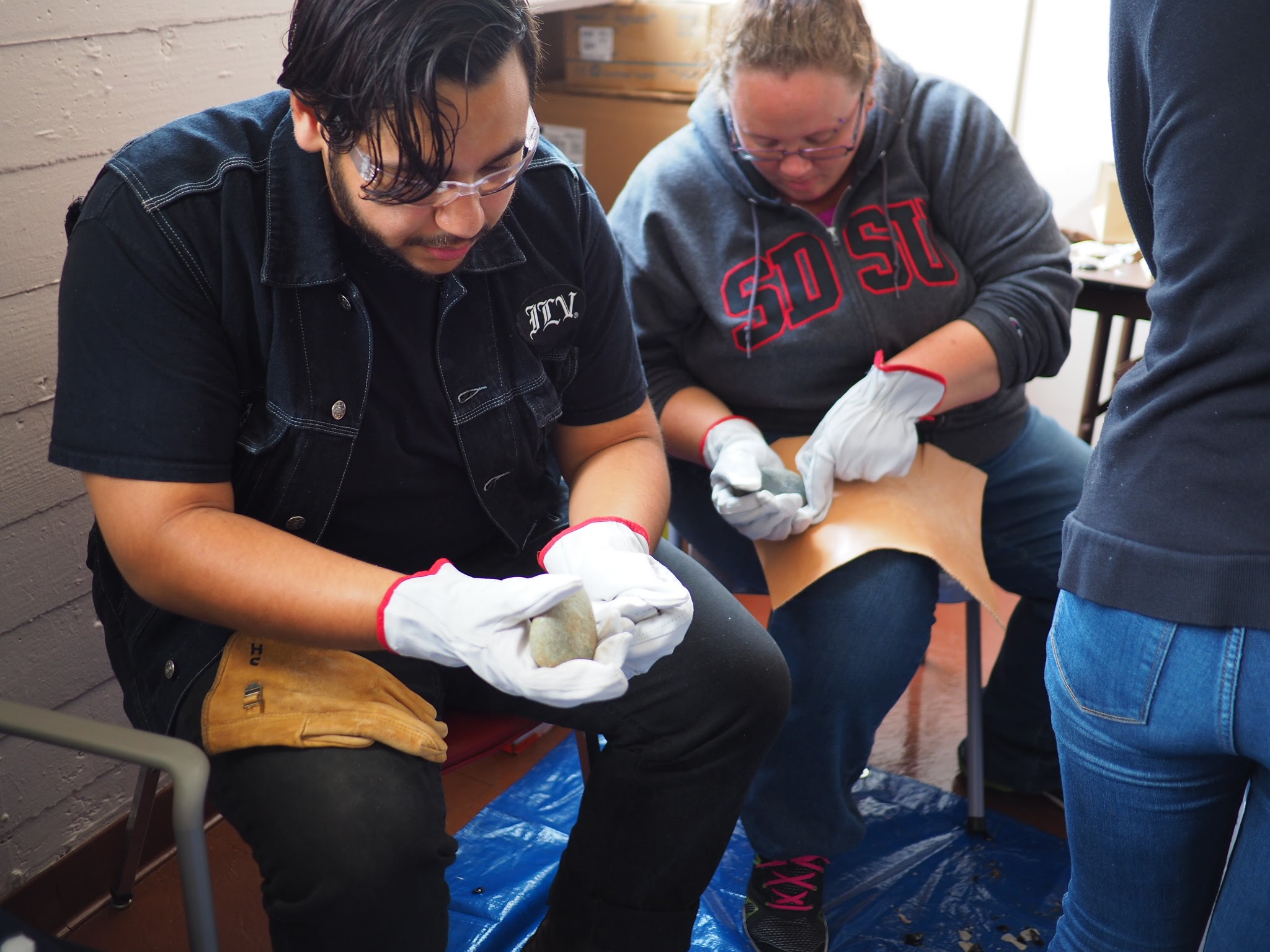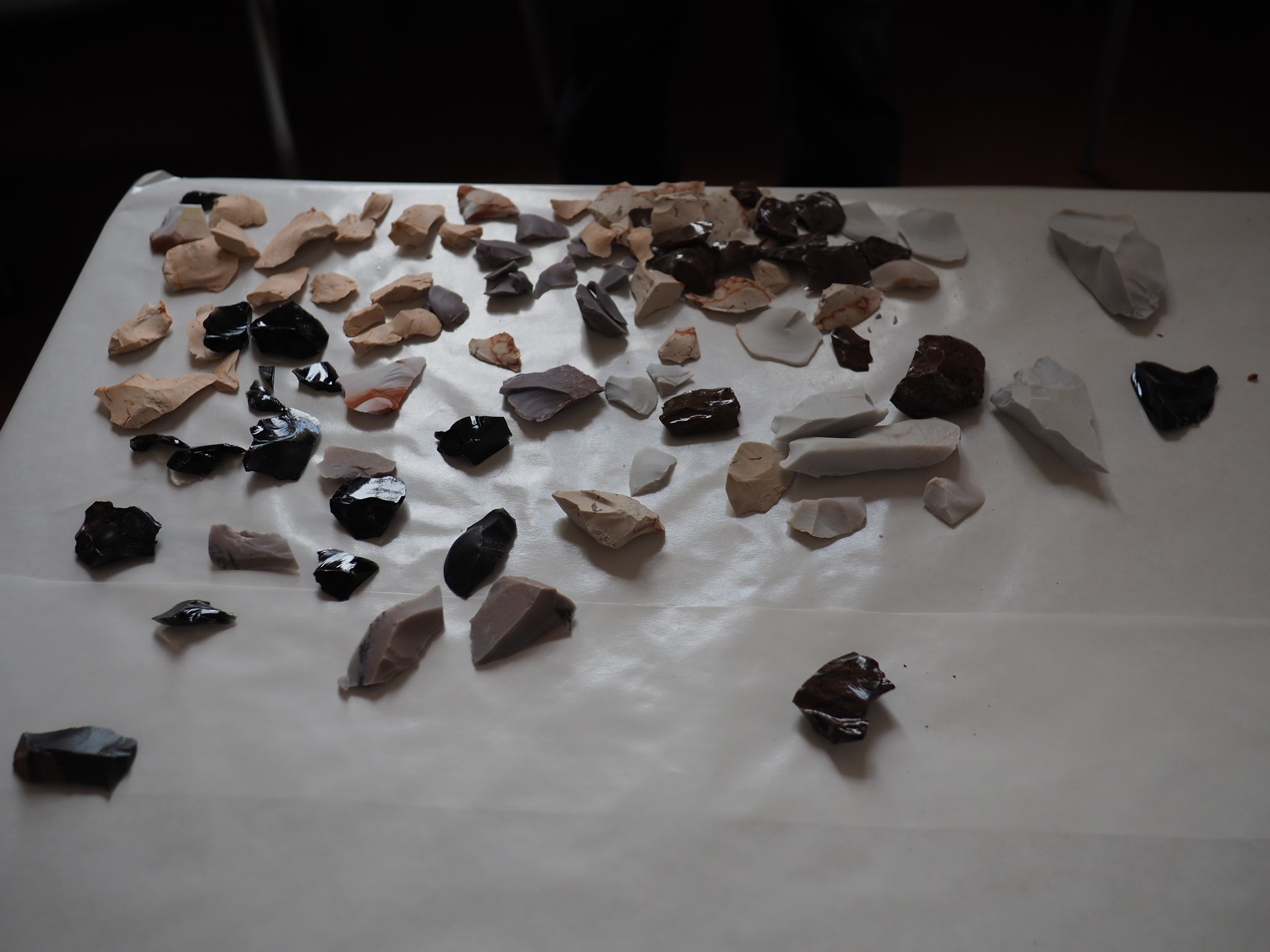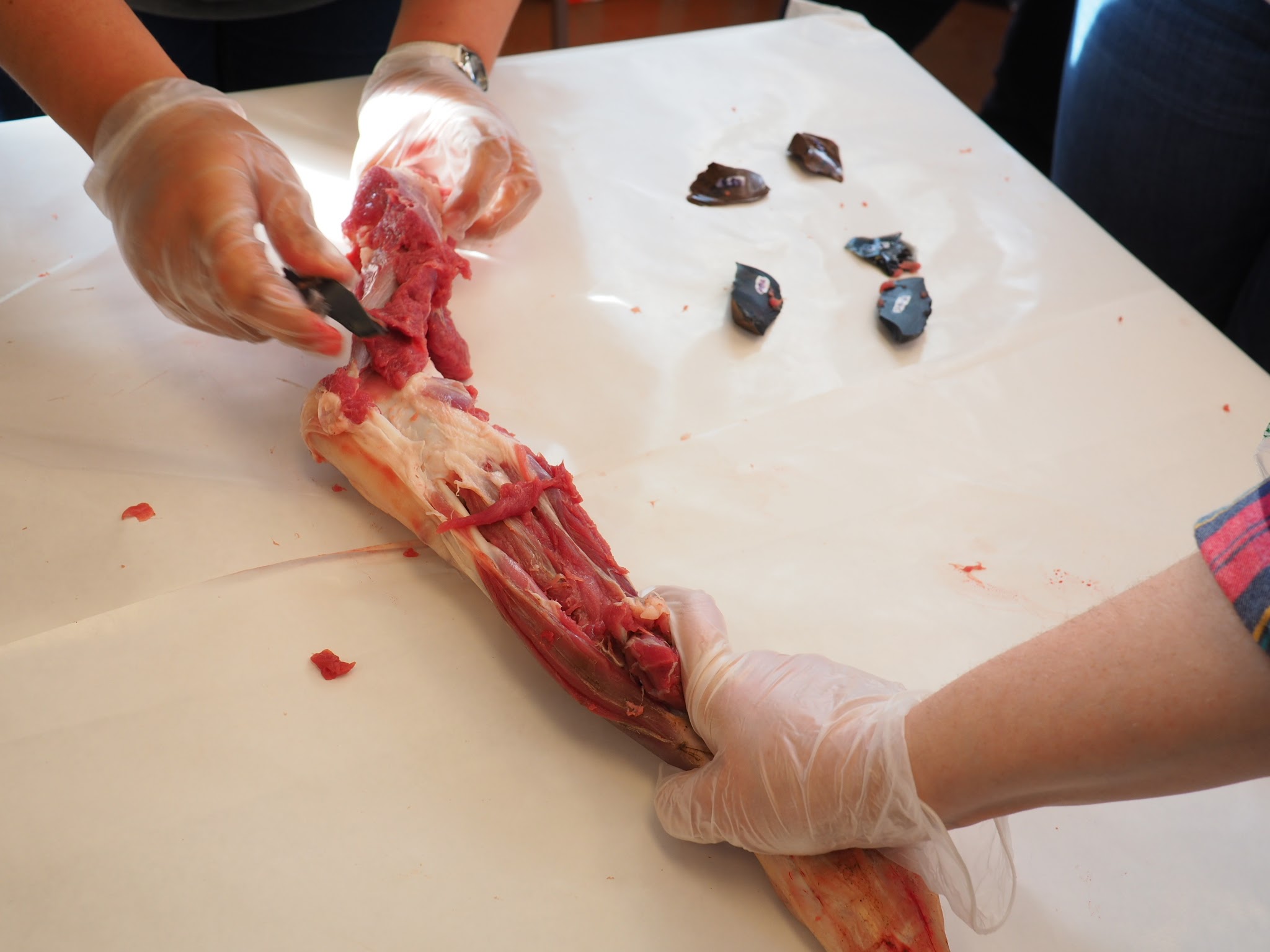2017 SDSU Experimental Archaeology Workshop
This semester I had the distinct pleasure of working with some of our SDSU Anthropology undergraduates to plan and execute a workshop in which students could get a first-hand experience of making and using stone tools to conduct use-wear experiments. Best of all, the students obtained a grant to fund this from our campus initiative called the “Student Success Fee”. This workshop was made possible through their successfull application to this program, which, in turn, derives from their own student fees. While I worked with them to develope the plan and proposal, it really was the dedication of our undergraduate majors that led to a successful outcome.
During the workshop, the students achieved the following learning outcomes:
1) Learned how to design scientific experiments and carry them out.
- Derived a procedure to study wear marks on a variety of stone tool types, doing a variety of activities
- Used repetition and controls to ensure scientific validity.
- Recorded all practices and methods in enough detail to ensure replicability.

2) Learned the basics of lithic (stone tool) analysis.
- Learned the basic mechanics of stone tool production (“flintknapping”)
- Became familiar with the stone tool morphology and typology (flakes vs. blades, flake attributes, etc.)
- Learned how to measure key attributes of stone tools (use of calipers, essential measurements, etc.)
- Learned the basics of photographic documentation and the initial stages of photometric measurements.

3) Learned basic archaeological laboratory practices.
- Washing and labeling artifacts.
- Sorting artifacts by attribute.
- Basic record keeping.

4) Engaged in participant observation, and reflexive scientific practice.
- Students designed their own experiments, noting also their reasoning and experiences as well as the results.
- Conducted interviews with student participants after engaging in the use of stone tools as ancient people did.
- Ensured reflexive practice and anthropological insights were integral to the activities.

I’ve edited a short YouTube video of the workshop, which you can watch here:
We will continue the workshop in a follow-up session in which we will analyze the cut marks on the bones and the microwear on the tools. Stay tuned!
Update: Read the nice writeup about the workshop in the SDSU Daily Aztec!

Leave a comment